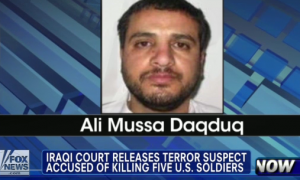On Wednesday, April 2, 2014, Specialist Ivan Lopez, United States Army, kills three and wounds sixteen at Ft. Hood Army base in Killeen, Texas. Lopez used a personally owned .45 caliber handgun, and took his own life when confronted by a U. S. Army military policeman.

By all accounts, SPC Lopez was a troubled young man. Twenty-four hours news coverage provides ample speculation, blame and conjecture about what could have been done, what should have been done, and what should be done in the future to prevent these tragedies.
Rather than classify this as a military problem, it may be more appropriate to look at it as a workplace violence problem. Workplace Violence occurs in the government work environment, the public work force, and in private industry. The term “going Postal” was coined by the seemingly inordinate number of workplace shootings that occurred in the U. S. Postal Service, starting with Patrick Sherrill gunning down fourteen of his co-workers in Edmond, OK in 1986. In 1999, two deranged individuals murdered twelve of their fellow students at Columbine High School, and there have been several school shootings throughout the country since then. Now, the spotlight is on the military, which just had their fourth high profile mass shooting in a relatively short period of time.
Are postal facilities, schools, and military bases any less safe than your average business , town, or public facility? Statics say no. Because mass shootings are relatively rare, occur in a highly public places, and have the added tragedy of the randomness of the victims, they lead to hyped news coverage. And we search in vain for an answer as to why. Often, that answer is known only to the perpetrator. What is known from research in past mass shootings is that mental illness is a prevailing factor, and the killers generally target places and/or people they consider responsible for their perceived unresolved grievances. Another factor to consider are “copycats”. A postal worker, student, military personnel, or other deranged worker sees the spotlight given to previous killers in their specific environment and decides that is the solution to drawing attention to their issues, however misguided that thought process is.
According to the FBI, there is no demographic profile of an active shooter. Many active shooters display observable pre-attack behaviors, which, if recognized, can lead to the disruption of the planned attack. The pathway to targeted violence typically involves an unresolved real or perceived grievance and an ideation of a violent resolution that eventually moves from thought to research, planning, and preparation. While not every active shooter can be identified and thwarted prior to attacking, many potential active shooters who appear to be on a trajectory toward violence can be stopped.[i]
Based on initial reports, this appears to be the case of SPC Lopez. He was reported to have been suffering from depression and anxiety, was involved in a dispute or altercation at his place of work, left the scene and returned later with a handgun which had been recently purchased. Whether this tragedy could have been prevented will be the subject of debate for the foreseeable future. Knowing the warning signs of violent behavior, having a viable and enforceable threat / violence policy, and having a straightforward, workable grievance solution process are all steps to reducing violence in the workplace.
Simpson Security and Investigative Advisory Group, LLC has extensive experience in dealing with workplace violence issues. Please contact us for workplace violence investigations, mitigation strategies, and training.
[i] FBI Law Enforcement Bulletin, May 2013, Addressing the Problem of the Active Shooter, Katherine W. Schweit, J.D.
http://leb.fbi.gov/2013/may/addressing-the-problem-of-the-active-shooter

